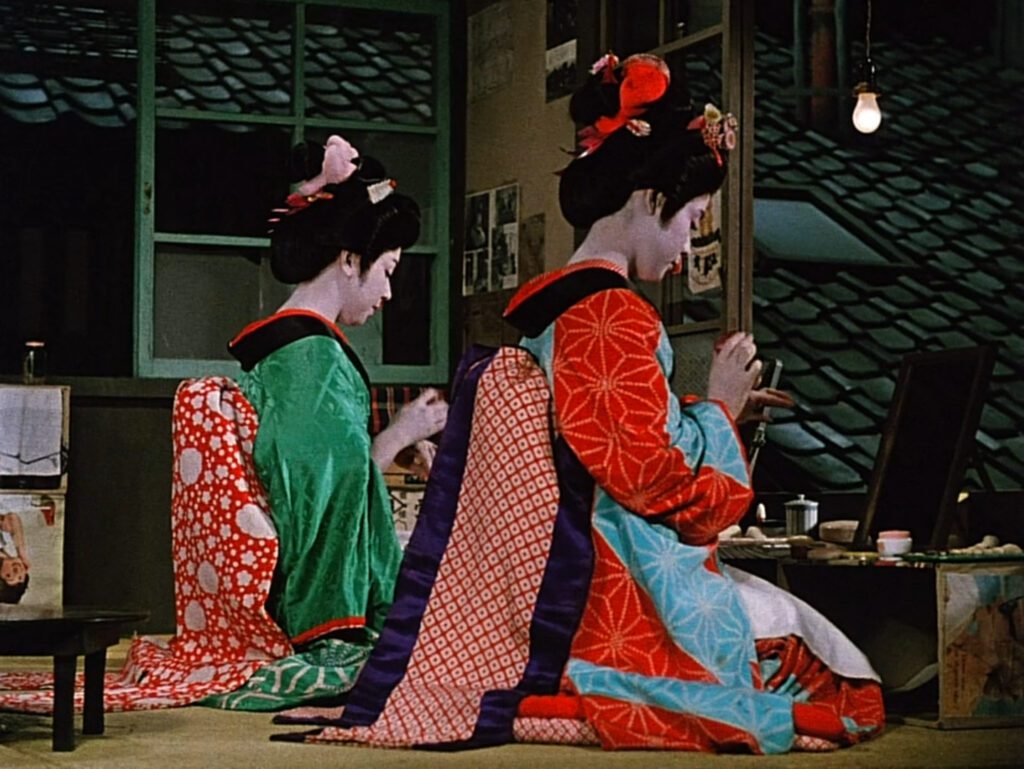
Floating Weeds
1959, directed by Yasujiro Ozu
Yasujiro Ozu was known for making realistic family dramas. A ghost story, even a respectable one like Ugetsu, would have been unthinkable for him. Or would it? In Floating Weeds the kabuki actors stand apart from their surroundings like wandering spirits from the distant past. While the townspeople dress in modern clothing, the itinerant actors wear antique costumes, traditional kimonos, or patterned robes. Moreover, the troupe consistently disrupts the quiet life of the town it last visited twelve years ago. It’s as if the place were being haunted, for the duration of the actors’ stay, by its past.
The contrast begins as soon as the costumed actors mix with the modern townspeople, parading through town in full dress to advertise their play. The play itself, with swordplay and stylized dialogue, is a historical drama of the late Edo period, so that the sight of the two groups intermingling is like watching two different centuries coexisting. The rule of the wardrobes is not absolute – a few locals including Oyoshi and the prostitute Okatsu dress in Japanese-style robes, and the kabuki actors are often in their undershirts – but the costuming is sufficiently consistent to keep reminding us that the actors belong to the past.
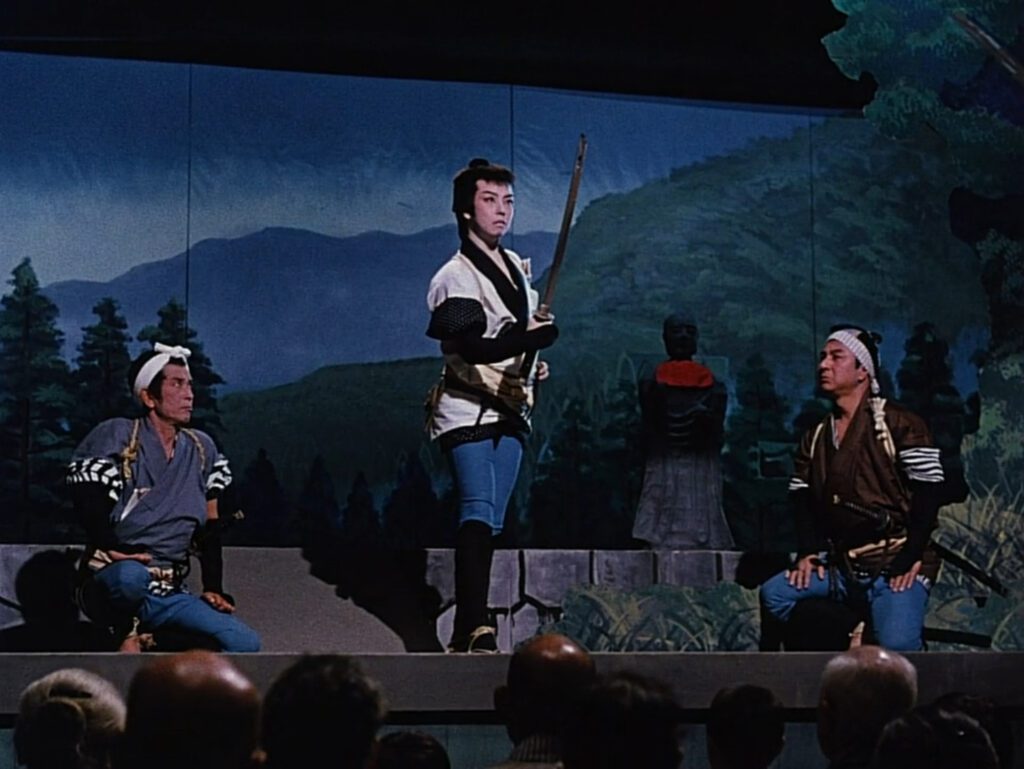
It’s easy to see why Ozu liked the story enough to film it twice, originally in 1934 as A Story of Floating Weeds. Most of his films are about time – not time as an abstract thing, but the way we live in and experience time. This accounts for his numerous stories about generational change, his use of the seasons in so many film titles, and the ever-present tension between tradition and modernity. The story of actors returning to a town they remember from years back, and where they too are remembered, creates a palpable sense of the passage of time.
The second pattern, the actors’ disruptive behavior, is even more consistent than the difference in clothing. During the parade a child actor urinates on a wall, Yatazo snatches a flyer from the boy he gave it to, and Kichi tosses leaflets rudely into various shops. The supporting actors immediately begin hunting for attractive women. Yatazo makes a fool of himself flirting with the barber’s daughter, and Kichi and Senta mock the older prostitute’s appearance in covert language. Troupe leader Komajuro returns to his ex-mistress Oyoshi and rekindles his relationship with his secret son Kiyoshi. Komajuro’s jealous mistress Sumiko confronts Oyoshi and pays Kayo to seduce Kiyoshi, threatening to break his heart while risking his college plans and creating friction with his parents.
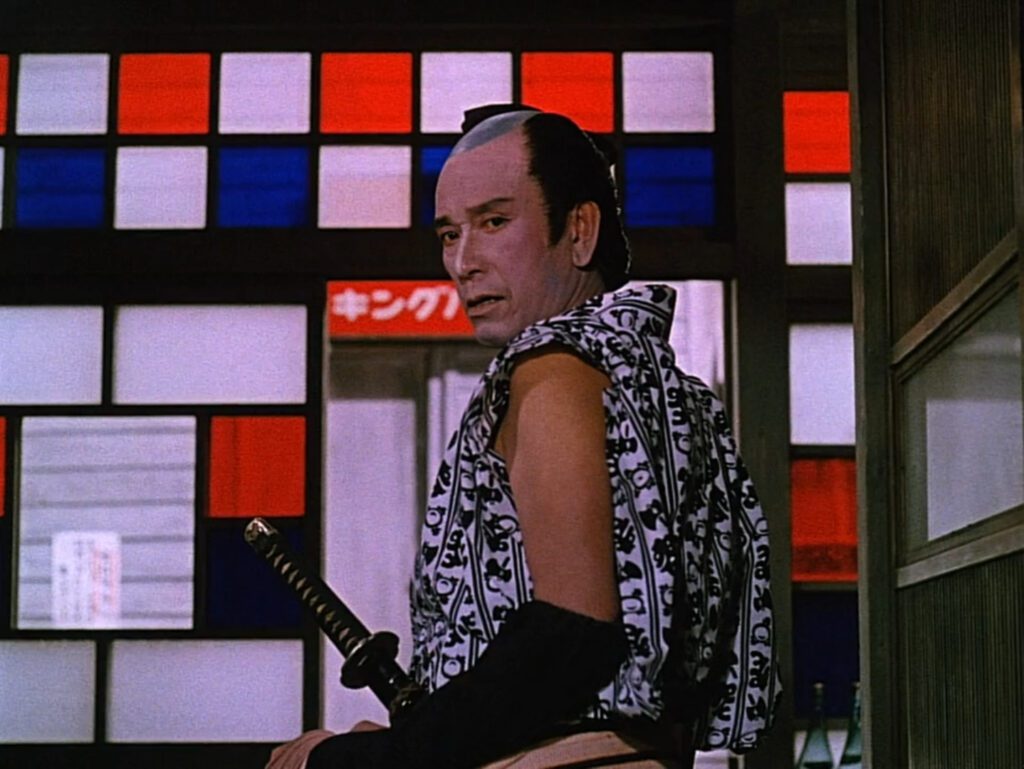
Balancing this pattern of disruptions, however, is an opposite and equally consistent pattern. In their conflicts with the kabuki actors, the locals always get their way. When Yatazo harasses the girl at the barber shop, her mother puts him in his place, taking over as barber and sharpening her razor menacingly. Of course we find him later with a bandage across his cheek. Komajuro forbids his son to attend the kabuki show, but the boy goes anyway. The prostitutes ultimately get the better of their traveling clients, refusing them drinks when they’re broke. When the troupe folds, the actors sell their property at a disadvantage. Kayo may seduce Kiyoshi, but Kiyoshi triumphs in the end, winning her love and holding onto her. Oyoshi finally gets her way with Komajuro, revealing his identity to their son as she had long begged him to do. Kiyoshi always beats his father at Go, and although he lets his father slap him around, he has no problem protecting Kayo from his father’s aggression.
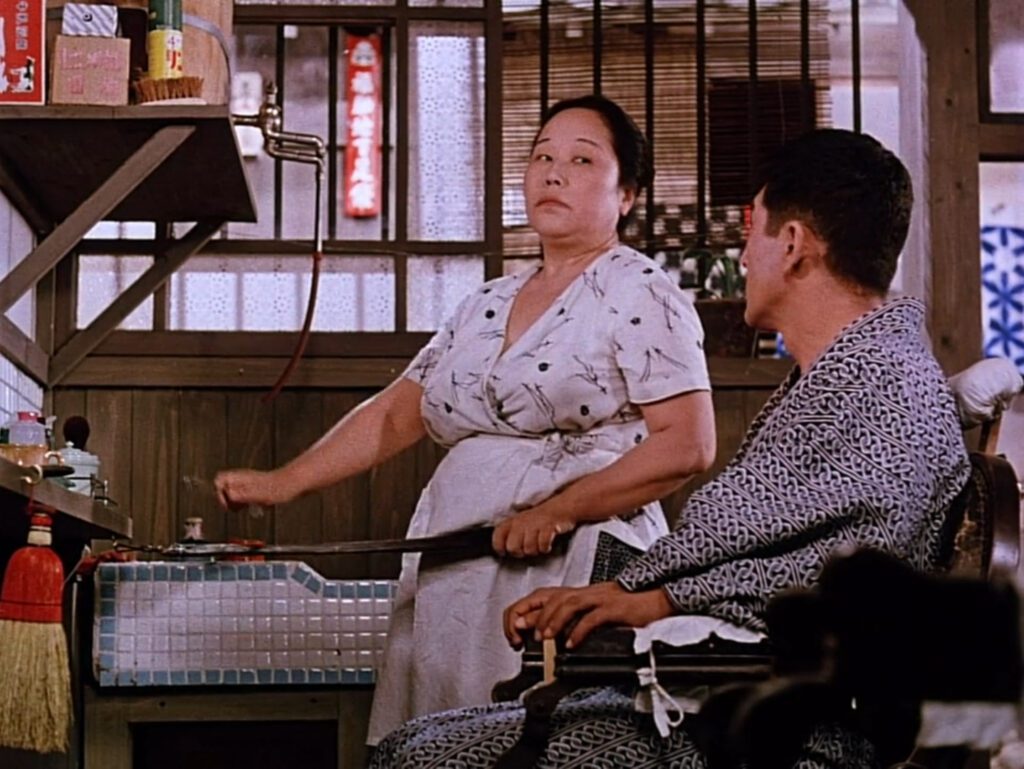
The insight here would have felt reassuring to a country still bothered by its past. Japan had recently caused and endured much suffering in a belligerent war, whose memory would continue to disrupt the peaceful lives the Japanese were building. The kabuki play associates the past with war, and Floating Weeds tells its audience that the past is disruptive by nature. Nevertheless – as the locals in the story always get their way – the world belongs to the present, so we should not fear that the past will harm us.
There is one exception to the rule that the locals always get their way. Oyoshi wants Komajuro to stay and form a family with their son and new daughter-in-law, but after agreeing he changes his mind and goes off to form another troupe, hoping to make his son proud. On this point the movie acknowledges that while the world may belong to the present, the past itself, in this case Komajuro, does not belong to us, and we cannot change it.
All of this describes how Floating Weeds speaks to its contemporary audience, but it’s the kabuki actors, the characters linked to the past, who dominate the story. Only two major characters, Oyoshi and Kiyoshi, belong to the town, and the title refers to the traveling actors. These “floating weeds” may be bothersome but harmless intrusions from the past, but Ozu apparently felt that there is more to learn from them than from characters like Kiyoshi, whose story ends with hope of happiness and success. The actors’ story is a long downward arc if not a tale of outright failure. We hear that Komajuro’s troupe was once talented, but in the present tense we only hear that they’re overacting or old-fashioned. They fill the small theater on opening night, but subsequent performances attract thin crowds of children and elderly. The actors are disappointed, the play ends long before planned, and the troupe disbands. When the idle players sit by the seashore, rows of gravestones echo their bodies.
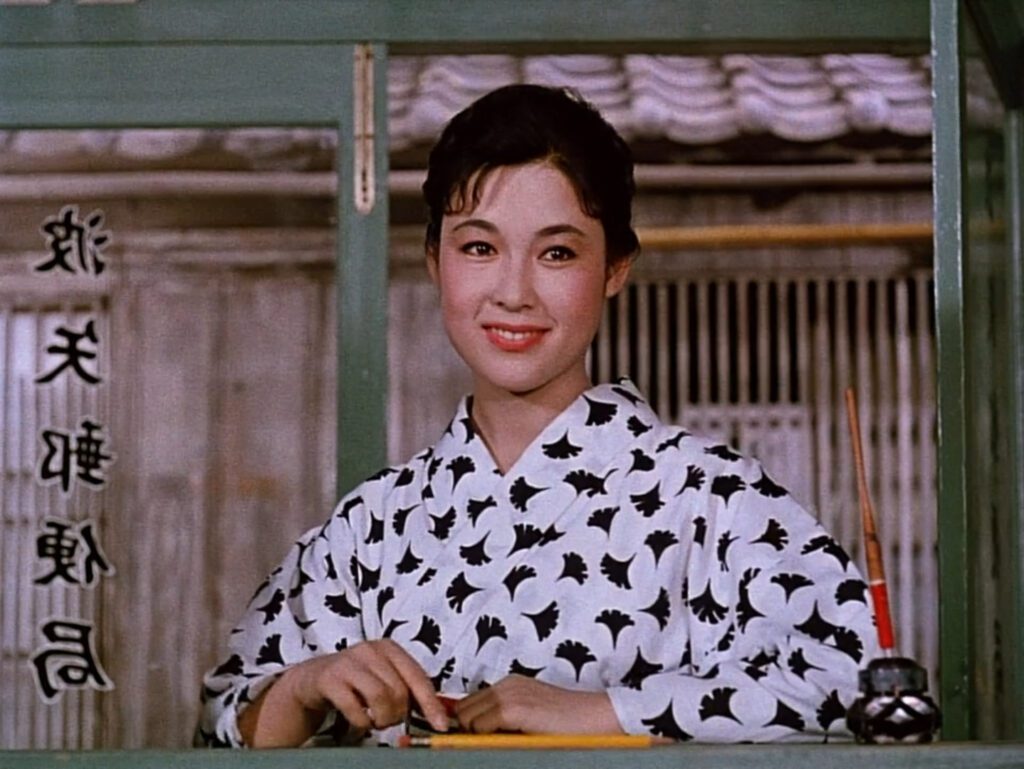
As all this unfolds, a couple of remarkable things happen. First of all, several troupe members leave their profession for ordinary jobs. One will go back to work in a bathhouse, one will go to school, another will sell pickles, and Kayo will settle down with Kiyoshi and his mother. No longer will these characters belong to the past. As the past loses its influence, the present reclaims more and more of its power. Second, the film is bracketed by two journeys: the actors’ arrival by boat, and their departure by train. A boat is a timeless mode of transport, familiar to ancient peoples, but trains are a sign of the modern age. In Ozu’s films, boats are associated with eternity and trains with linear time. Trains appear only late in Floating Weeds, as the young lovers begin their day at a hotel within earshot of the railyard, and the trains are preceded by a shot of a wall clock in Oyoshi’s house. Almost invisibly, the clock pendulum in one shot is precisely synchronized with the chugging of the locomotive in the next shot. At its deepest level Floating Weeds dramatizes not merely the disruptive intrusion of the past into our lives, but the never-ending recycling of the past into the present. Even as the past seems to get weaker, it replenishes itself because time moves on and the present becomes a new past.
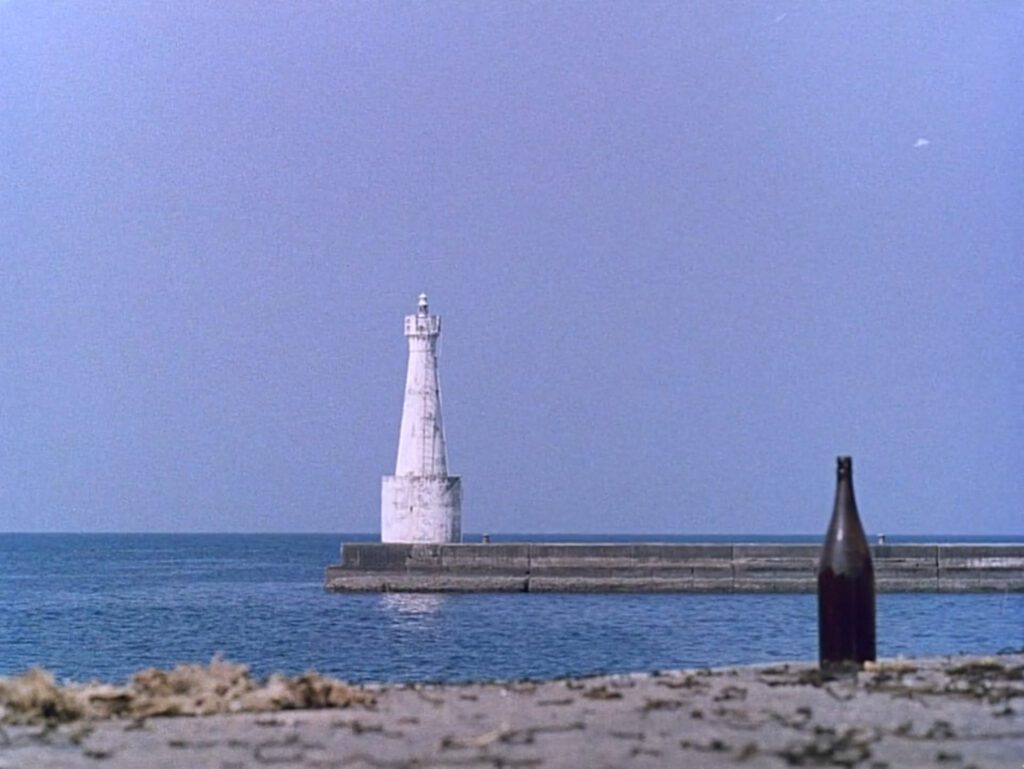
On one hand this sounds like a melancholy view of life. Komajuro and Sumiko ride off on a train hoping for a better future, but we know they are aging and it won’t be easy. Other characters like Sensho and his grandson are left stranded. Worst of all is Kichi, who after scolding his mates for plotting to steal their master’s money, hypocritically runs off with the master’s purse and everything else he can grab. The actor who plays Kichi had played the son, the romantic lead, in the 1934 version – the only overlap in the two movies’ casts – so it feels as if the prior generation’s Kiyoshi had come to a disappointing and disgraceful end.
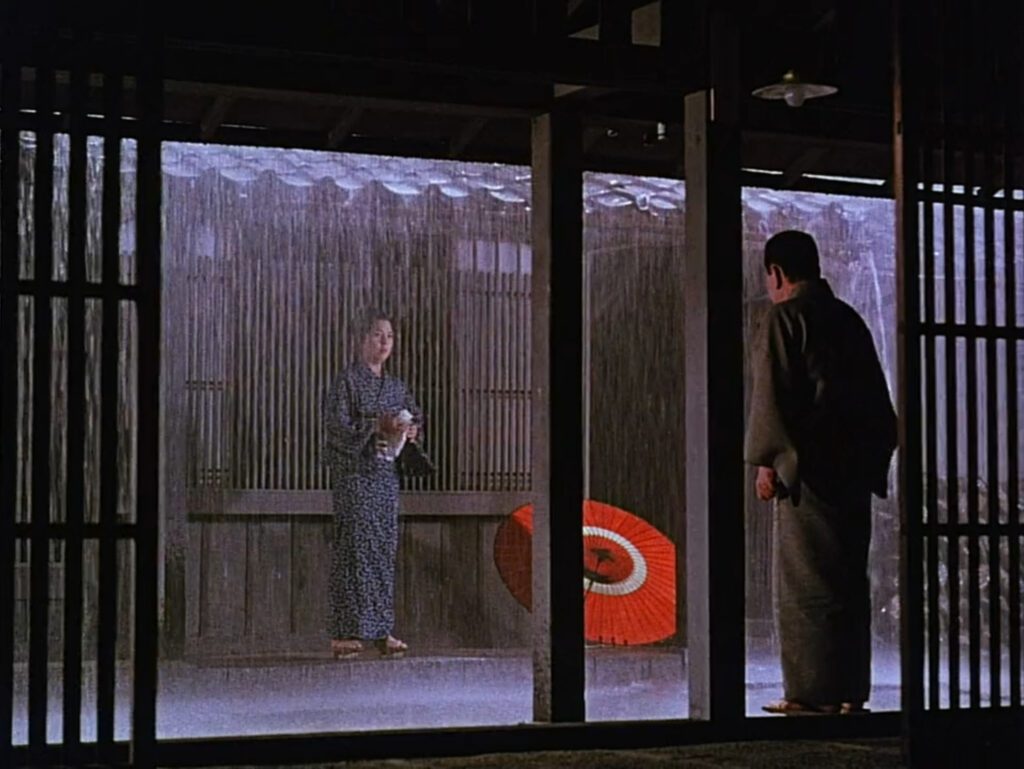
In fact, however, Ozu is careful not to finish any character’s story. There are no happy or sad endings in Floating Weeds because no one’s story ends conclusively. This is crucial because Ozu’s purpose in broadening our view of time is to instill faith in life, and faith is not faith if it hangs on outcomes. Instead of trusting that everything will turn out all right, we should trust in the order of things – that however things turn out, life is worth living. Floating Weeds expresses this faith not only in its balance between past and present, but also in its visuals which reveal an extraordinary order behind everyday life. The Japanese architecture creates an intricate web of overlapping, nested, and perpendicular frames, which always imply a kind of order. The opening shot finds a delightful symmetry between a lighthouse and a wine bottle. When Sumiko bribes Kayo to seduce Kiyoshi, the two women sit in the dressing room in full costume, each woman’s dress reflecting her ornate background like a chameleon, to spectacular effect. The first argument between Sumiko and Komajuro is staged so beautifully that it outweighs the ugliness of their fight – each stands in a wooden colonnade on opposite sides of a rainy street, the bright red circle of Sumiko’s umbrella balancing the brown rectilinearity of the wood beams. A splash of red accents nearly every shot in Floating Weeds – a flower, a lantern, a bicycle, a teapot, often in a corner of the frame – which film critic Roger Ebert likened to the red artist’s mark on a traditional Japanese woodcut. If so, then these notes of red are like a reassuring voice reminding us of the natural order that our faith in life always seeks.
CONNECTIONS:
Les parents terribles – Faith in the natural order of things
Tokyo Story – Boats associated with eternity, trains with linear time
Equinox Flower – Train receding into the distance in the final shot, representing time moving forward but with a simultaneous sense of the eternal
REFERENCES:
Roger Ebert from the commentary on the Criterion Collection dvd at 11:28